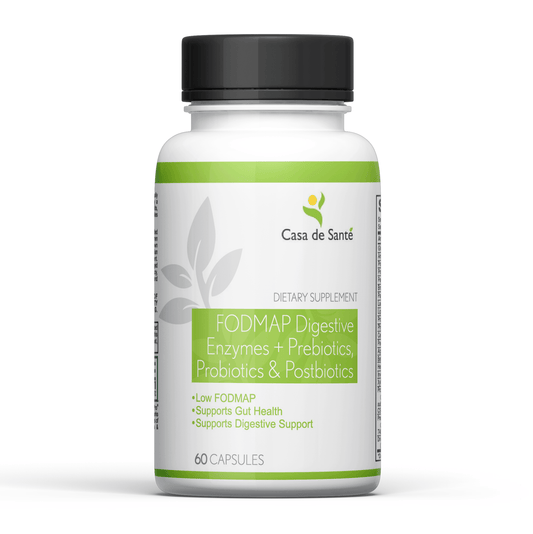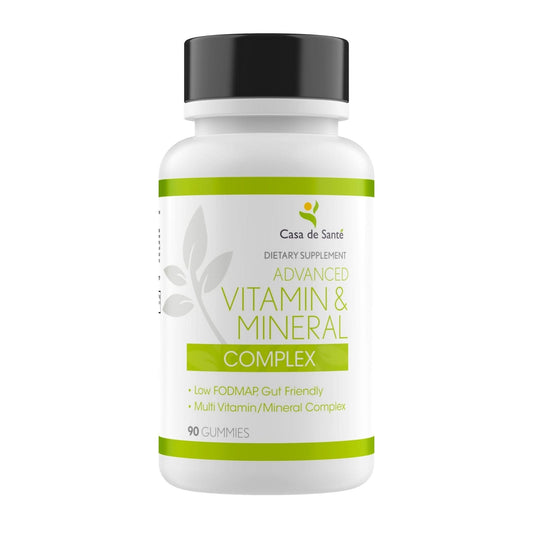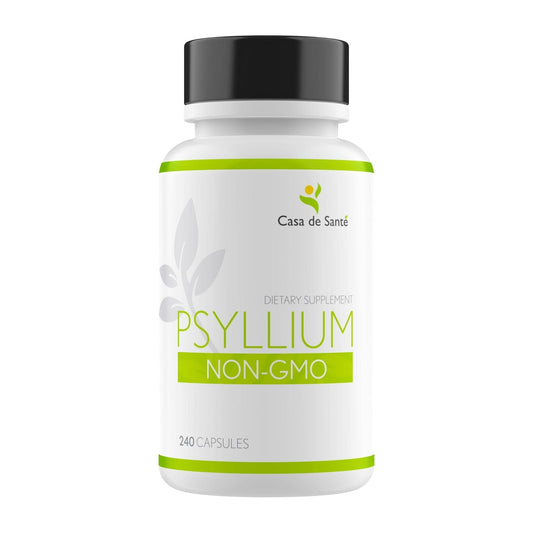Understanding POTS: How Many Days Does a POTS Episode Last?
POTS, or Postural Orthostatic Tachycardia Syndrome, is a condition that affects blood flow and can lead to a range of uncomfortable symptoms. For those living with it, understanding how long a POTS episode lasts can be crucial for managing their daily lives. In this article, we will explore the nature of POTS episodes, their duration, and what individuals can do to cope with this challenging condition.
Key Takeaways
- POTS episodes can vary in duration, often lasting from a few minutes to several days.
- Factors like hydration, stress, and medication can influence how long an episode lasts.
- Recovery from a POTS episode may take time, with some individuals needing days to fully bounce back.
- Symptoms can differ widely from one person to another during POTS episodes.
- Living well with POTS involves understanding triggers and developing effective management strategies.
Understanding POTS Episodes
What Is a POTS Episode?
Okay, so what exactly is a POTS episode? Basically, it's when your POTS symptoms flare up. This means you're experiencing a cluster of symptoms related to the condition, often triggered by specific events or circumstances. It's not just a bad day; it's a noticeable worsening of your baseline POTS symptoms. Think of it like a storm brewing – the usual discomfort intensifies, making daily life even more challenging. It's important to recognize these episodes so you can manage them effectively.
How Do POTS Episodes Manifest?
POTS episodes can show up in many ways, and honestly, it's different for everyone. Some people might feel incredibly dizzy and lightheaded, almost to the point of fainting. Others might experience a racing heart, even when they're just sitting still. Then there are the less obvious symptoms, like brain fog, fatigue, and nausea. It's a mixed bag, and the intensity can vary too. One day might be a mild inconvenience, while another could leave you completely bedridden. Recognizing your personal symptom pattern is key. It can develop suddenly or gradually. Symptoms happen immediately or a few minutes after sitting up or standing. Lying down may relieve some of the symptoms.
What Triggers POTS Episodes?
Okay, so what sets off these POTS episodes? Well, there's no single answer, because triggers vary from person to person. However, some common culprits include:
- Dehydration: Not drinking enough fluids can really mess with your blood volume, making POTS symptoms worse.
- Heat: Hot weather can cause blood vessels to dilate, which can lead to a drop in blood pressure and trigger an episode.
- Stress: Both physical and emotional stress can put a strain on your body and nervous system, potentially leading to a flare-up.
- Infections: Sometimes, even a simple cold can trigger a POTS episode. Significant illnesses, such as viral illnesses like COVID-19, can also be a trigger.
Identifying your specific triggers is a game-changer. Keep a symptom journal to track what you were doing, eating, or feeling before an episode hits. This can help you spot patterns and take steps to avoid those triggers in the future.
Duration of POTS Episodes
How Many Days Does a POTS Episode Last?
Okay, so how long do these POTS episodes actually last? It's a tricky question because there's no single answer. The duration can vary quite a bit from person to person, and even from episode to episode for the same person. Some folks might have symptoms that flare up for a few hours, while others could be dealing with it for days or even weeks. It's really all over the place.
Factors Influencing Episode Duration
Several things can affect how long a POTS episode hangs around. Here's a quick rundown:
- Triggers: What kicked off the episode in the first place? Was it stress, dehydration, or something else? Identifying and managing triggers can sometimes shorten the duration.
- Overall Health: If you're already feeling run-down or dealing with other health issues, a POTS episode might stick around longer.
- Management Strategies: Are you actively trying to manage your symptoms with things like increased fluid intake, compression garments, or medication? These things can make a difference.
- Individual Variability: Let's face it, everyone's body is different. What works for one person might not work for another, and some people just naturally have longer or shorter episodes.
Typical Recovery Time After an Episode
Recovery time is also super variable. Some people bounce back pretty quickly after an episode, feeling more or less normal within a day or two. Others might need a week or more to fully recover. It really depends on the severity of the episode and how well you're able to manage your symptoms. Listen to your body and don't push yourself too hard.
It's important to remember that POTS isn't life-threatening, but it can seriously mess with your daily life. The good news is that there are treatments and strategies that can help you feel better. Don't be afraid to talk to your doctor and explore your options.
Symptoms Associated with POTS
Common Symptoms During an Episode
Okay, so when a POTS episode hits, it's not just one thing. It's like a whole bunch of stuff happening at once, and it can be different for everyone. The most common symptoms include dizziness or lightheadedness, especially when you stand up.
- Heart palpitations (that feeling like your heart is racing or skipping beats)
- Brain fog (trouble concentrating or thinking clearly)
- Fatigue and weakness
- Headaches
- Feeling like you're going to pass out
Variability of Symptoms
What's really tricky about POTS is how much the symptoms can vary. One day you might mostly deal with dizziness, and the next it could be all about the fatigue. Some people get really bad headaches, while others barely notice them. It's super unpredictable, which makes it hard to plan anything. Plus, the severity changes too. Sometimes it's just a mild annoyance, and other times it's completely debilitating. It's like your body is just throwing curveballs at you all the time. It can be triggered by autoimmune conditions too.
Long-Term Symptoms After Episodes
Even after a POTS episode seems to be over, some symptoms can stick around for a while. It's not like you just bounce right back to normal. Fatigue is a big one – that can linger for days, making it hard to get anything done. Brain fog is another common problem; you might feel like you're walking around in a haze, struggling to focus. And sometimes, the dizziness just won't completely go away, leaving you feeling unsteady and off-balance. It's like your body is still recovering, even when the worst of the episode is over. Dealing with these long-term effects can be really frustrating, because it feels like you're never quite back to 100%.
Living with POTS
Daily Management Strategies
Okay, so you're dealing with POTS. It can be a real pain, but there are things you can do every day to make it a bit easier. First off, hydration is key. Seriously, carry a water bottle everywhere. Aim for small, frequent meals instead of big ones that can make you feel sluggish. Compression garments? They're not just for grandma anymore; they can really help with circulation. And keep a symptom journal. Note when you feel bad, what you ate, what you were doing. It's like detective work, but for your body. This can help with family wellness.
Support Systems for POTS Patients
Don't go it alone. Seriously. Find your tribe. Talk to your family and friends about what you're going through. It helps them understand, and it helps you feel less isolated. Look for online or in-person support groups. Hearing from other people who get it can make a huge difference. Knowing you're not the only one struggling is powerful. Plus, they might have tips and tricks you haven't thought of.
Coping Mechanisms for Episodes
When an episode hits, it's all about damage control. Find a cool place to lie down. Elevate your legs if you can. Sip on some water or an electrolyte drink. Deep breathing exercises can help calm your heart rate. And honestly, just give yourself permission to rest. Don't try to push through it. Listen to your body. It's telling you to slow down. Remember, daily management is key.
Prognosis and Outlook for POTS
Long-Term Effects of POTS
Living with POTS can be a rollercoaster. Some people find their symptoms ease over time, while others experience a more chronic course. The long-term effects really vary from person to person. It's not unusual to have good days and bad days, making it hard to plan. POTS isn't considered life-threatening, but it can sure feel like it sometimes, impacting everything from work to social life. Managing symptoms is key, and finding the right combination of lifestyle changes and medical support can make a big difference. It's also important to remember that everyone's journey with POTS is unique, and what works for one person might not work for another.
Improvement Over Time
For many individuals with POTS, there's hope for improvement over time. It's not a guarantee, but a significant number of people find that their symptoms become more manageable as they learn to navigate their condition. This often involves a combination of medical treatments, lifestyle adjustments, and self-care strategies. Physical therapy, for example, can help improve blood flow and strengthen muscles, reducing symptoms. Staying hydrated and maintaining a balanced diet are also important. While some people may experience complete remission, others may continue to have residual symptoms that require ongoing management.
Here are some things that can help:
- Consistent exercise routines
- Dietary adjustments
- Stress management techniques
Impact on Quality of Life
POTS can really throw a wrench into your daily life. The unpredictable nature of symptoms can make it hard to maintain a regular work schedule, participate in social activities, or even just run errands. Fatigue, dizziness, and brain fog can all take a toll, impacting both physical and mental well-being. Finding ways to manage these symptoms is crucial for improving quality of life. This might involve working with a healthcare team to develop a personalized treatment plan, making lifestyle changes to reduce symptom triggers, and building a strong support system to cope with the emotional challenges of living with a chronic illness. It's also important to remember that it's okay to ask for help and to prioritize self-care. For adolescents, severe POTS can be especially challenging.
Seeking Medical Help for POTS

When to Consult a Healthcare Provider
It's important to know when to seek medical advice if you suspect you have POTS. If you experience lightheadedness or a noticeably increased heart rate upon standing, it's a good idea to consult with a healthcare provider. Don't hesitate to seek help; early diagnosis and management can significantly improve your quality of life. Finding a healthcare provider experienced with POTS symptoms is ideal for getting the best care. Also, having a primary care doctor for routine check-ups is important.
Diagnostic Procedures for POTS
POTS can be tricky to diagnose because its symptoms can vary and overlap with other conditions. Often, people live with symptoms for a while before getting a diagnosis. Your doctor will start by asking about your medical history and symptoms, and they'll do a physical exam. The tilt table test is a key tool for diagnosing POTS. This test monitors your heart rate and blood pressure as you change positions. Besides the tilt table test, other tests might be used to rule out other conditions.
Treatment Options Available
While there's no cure for POTS, various treatments can help manage the symptoms. These include:
- Lifestyle changes, like increasing fluid and salt intake.
- Physical therapy to improve blood circulation.
- Medications to control heart rate and blood pressure.
It's important to remember that treatment is often individualized, focusing on addressing your specific symptoms and needs. Be wary of quick fixes from non-medical sources, as these can sometimes cause more harm than good.
Although the FDA hasn't approved specific medications for POTS, doctors sometimes prescribe drugs "off-label" to help with certain symptoms. These might include fludrocortisone to increase blood volume or pyridostigmine to reduce tachycardia.
Research and Awareness of POTS

Current Research Trends
Research into POTS is really starting to pick up steam, which is great news for everyone affected. Scientists are exploring a bunch of different angles to try and understand what causes POTS and how to treat it better. One major area of focus is identifying specific biomarkers that can help diagnose POTS more quickly and accurately. Genetics also plays a role, with researchers looking into whether certain genes make people more likely to develop the condition. Plus, there's a lot of work being done on the immune system and its potential involvement in POTS.
Raising Awareness About POTS
It's hard to believe, but many people still haven't heard of POTS. That's why raising awareness is so important. The more people know about POTS, the easier it will be for those affected to get diagnosed and find support. Awareness campaigns often involve sharing personal stories, educating healthcare professionals, and advocating for more research funding. Social media has become a powerful tool for spreading the word and connecting people who understand what it's like to live with POTS.
Community Support and Resources
Living with POTS can be tough, but you don't have to go it alone. There are tons of support groups and resources available to help you cope. These communities offer a safe space to share experiences, ask questions, and get advice from others who understand what you're going through. Online forums, social media groups, and local meetups can all be great ways to connect with fellow POTS patients. Plus, many organizations offer educational materials, advocacy programs, and even financial assistance to help people manage their condition.
Finding a community that understands POTS can make a huge difference in your quality of life. It's a place where you can feel understood, supported, and empowered to take control of your health.
Here are some ways to find support:
- Online forums and social media groups
- Local support group meetings
- Patient advocacy organizations
- Medical professionals specializing in POTS
Wrapping It Up
In summary, POTS can be a tough condition to deal with. Episodes can vary a lot from person to person, lasting anywhere from a few minutes to several days. While it’s not life-threatening, it can really mess with your daily routine. The good news is that many people find ways to manage their symptoms and improve their quality of life. If you or someone you know is dealing with POTS, remember that support is out there. Whether it’s talking to a doctor, joining a support group, or just sharing experiences with friends, you don’t have to go through this alone.
Frequently Asked Questions
What is POTS and how does it affect people?
POTS, or Postural Orthostatic Tachycardia Syndrome, is a condition that affects how blood flows in the body. It can cause symptoms like dizziness and rapid heart rate when someone stands up.
How long do POTS episodes usually last?
POTS episodes can vary in length. They might last for a few minutes or several days, depending on the person and the triggers involved.
What are some common triggers for POTS episodes?
Common triggers for POTS episodes include standing up quickly, dehydration, stress, and sometimes even hot weather.
Is POTS a dangerous condition?
While POTS is not life-threatening, it can make daily activities tough. Many people find ways to manage their symptoms with treatment.
Can POTS symptoms go away on their own?
Yes, some people with POTS may see their symptoms improve over time, especially with the right treatment and lifestyle changes.
What should I do if I think I have POTS?
If you suspect you have POTS, it's important to talk to a healthcare provider. They can help with diagnosis and suggest treatment options.




























